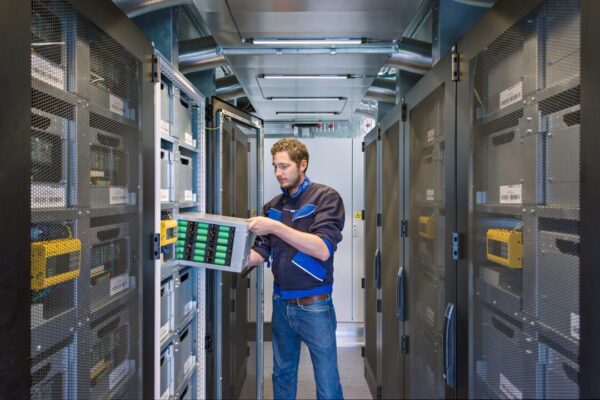
Battery-based local energy storage to back renewable-energy generation
The participating bodies are the Technical University of Munich (TUM), Kraftwerke Haag GmbH, VARTA Storage GmbH and the Bavarian Centre for Applied Energy Research (ZAE-Bayern): who collectively observe that in many southern Germany communities roof-mounted solar panels generate more power during peak times than can be locally consumed. At other times residents must draw on electricity from trans-regional grids. Transmission losses and fluctuations in electric power grids can be reduced when renewable energy is stored locally.
The project is called "Energy Neighbor", and the researchers say it could also could also be a grid-independent solution, although initially it is described as a stationary intermediate storage system. The experimental 200 kWh deployment is in the Moosham district of Kirchdorf in Upper Bavaria. Researchers in the EEBatt project (decentral stationary battery storage for efficient use of renewable energy and support grid stability) funded by the Bavarian State Ministry of Economic Affairs developed the “Energy Neighbor”.
With 200 kilowatt-hours of storage capacity and 250 kilowatts (peak deliverable at any time) of electrical power, the storage facility can balance the performance peaks of solar systems with the consumption peaks of connected households. It occupies a standard shipping-container outline. “In our field test we intend to gather insight from actual operation, [to] apply it to the advancement of storage systems,” says Andreas Jossen, project leader and professor for Electrical Storage Technology at the Technical University of Munich.
The eight-ton, fully integrated storage system currently comprises eight racks of 13 battery modules with 192 battery cells each, a battery management system and performance electronics. The EEBatt project is based around lithium-ion technologies; EEBatt uses Lithium Iron Phosphate (LFP) and Lithium Titanate Oxide (LTO) chemistry for the setup. “As required, the system can be extended in 25 kilowatt steps with further racks. With an additional transformer it can even be used as an insular, grid-independent solution,” says Herbert Schein, managing director of VARTA Storage GmbH.

Energy Neighbor is predicted to have a long lifecycle. The lifetime of the individual cells lies well over 10,000 complete cycles. “A special temperature management system that keeps the battery cells in an optimal working range whenever possible was developed to extend the lifetime,” says Dr. Andreas Hauer, Director Energy Storage at the Center for Applied Energy Research.
“Many local power transformers are at their limit with the currently installed solar capacity,” says Dr. Ulrich Schwarz, managing director of Kraftwerke Haag GmbH. “We expect to gain important insight on how this kind of storage will affect the stability [of] the low-voltage grid.”
The Bavarian Ministry of Economic Affairs and Media, Energy and Technology funds the Technical University of Munich within the EEbatt project with approximately 30 million euro. In addition to the scientists from 13 professorships of TUM, Kraftwerke Haag GmbH, VARTA Storage GmbH and the Bavarian Center for Applied Energy Research are involved as subcontractors.
Technical University of Munich (TUM); www.eebatt.tum.de (or in English; www.eebatt.tum.de/en/home/)
 If you enjoyed this article, you will like the following ones: don't miss them by subscribing to :
eeNews on Google News
If you enjoyed this article, you will like the following ones: don't miss them by subscribing to :
eeNews on Google News




